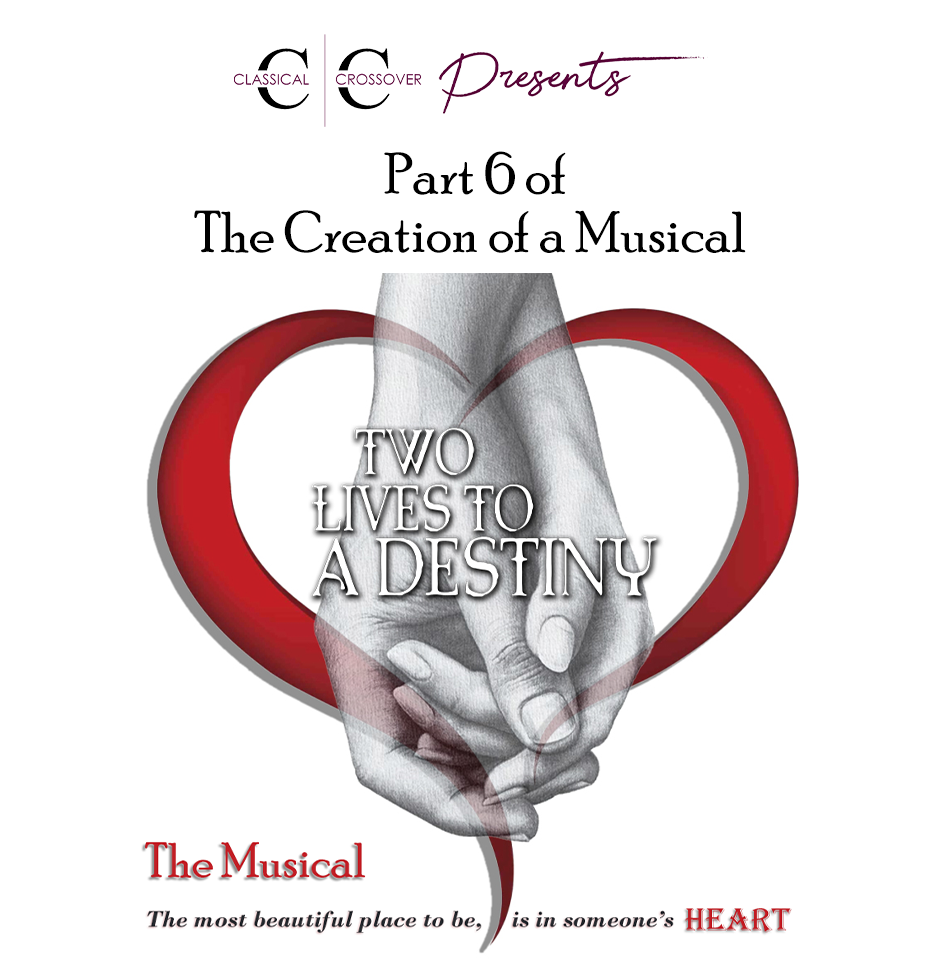
Author of “Two Lives to a Destiny”
Edited by Vaughn Harbin.
Flashbacks
Parts 1 through 5 recounted…
• I began playing piano at age 30, and got very good at it, very fast.
• Five months later, played Moonlight Sonata, and my own sonata called “The Dream”, at my first recital.
• Traumatized by this event, an old wound came back to life and unfortunately, the goal of becoming a pianist was no longer possible.
• As fate would have it, selling my piano suddenly became a really bad idea, and life had its way of correcting this mistake.
• How a moment in life inspired me for a lifetime. This is where it all began… “Séraphin: Heart of Stone”.
• I was now a little over 40 and woken up to a little project of my own. This got me back on my piano as a composer (definitely not as a performer). And while trying to get back into shape, I tried to figure out how to play my music on my piano, regardless of the struggle it might generate.
Part Six – Struggle aside, lots of music is being composed and a story is taking shape…
So, as it went… Once my hands, fingers, and mindset were all ready to go, I wrote a few compositions. Even before having any idea of what the story might be. My first compositions were mainly based on my immediate state of mind; they were: “The Storm” (weather associated), “An Angel’s Lullaby” (A CD called Sweet Dreams, filled with lullabies, I would play in the evening to help my children fall asleep), and “Solitude” (my most undesired feeling every time I got home from work). And so, these were my first three compositions for my unwritten story.
1- “The Storm” / composed in 2003.
2- “An Angel’s Lullaby” / composed in 2003.
3- “Solitude” / composed in 2003.
A little later that year, a fourth piece titled “Treason” was composed, and this was based on a contract that had gone very wrong at work. Then came compositions five, six and seven which were given the titles: “Heart Rage”, “My Life to You”, and “Destiny”. “Heart Rage” and “My Life to You” were a little dark and extremely emotional pieces as opposed to “Destiny” which encouraged a lot of positivity and fate.
Following these three compositions there was still no story, but a picture had started to draw itself out. It seemed that the story was going to be one of romance, but I most definitely would have to include some adventure if I were to be the one to write it. Without setting the stage for a little bit of adventure, I believe this story would have been a little more difficult for me to create.
Nevertheless, at this time, more time was spent composing music than writing a story, and after distributing a few homemade CDs of my music, people started asking if anyone influenced my music style as I played my
new compositions. Good question! Other than Michel Cusson, whom I mentioned in a previous part of this miniseries, there was another gentleman. This composer is extremely well known, and his name is Ennio Morricone.
The piece which influenced me the most at the time was “Once Upon a Time in the West”. As you might recognize later on in this miniseries, I composed a piece that begins in a similar way to “Once Upon a Time in the West”. Do you think you’d be able to recognize which one? I’ll elaborate a little more on this in my next episodes but in the meantime, listen to the piano soundtrack of “Two Lives to a Destiny” on Spotify or Apple Music to see if you’re able to find that composition. Good Luck!
Why Ennio Morricone? What I love the most about Ennio Morricone is the way he engulfs the emotion of the scene being played. But he isn’t afraid to extend his notes either. I realized that he had a way of making certain you received the fullest extent of the emotion being expressed by his music. This is mostly how he was able to pull you, emotionally, into the scene as if you were living it yourself, there and then.
My music needed to have a similar melodic structure to it, meaning it had to tell the story without even knowing the story. In a nutshell, that was the plan, to play the emotion while ignoring the need of playing to a metronome. Although some music teachers might catch on to a tune being out of tempo due to their extensive studies in music, the general public would not likely notice this but simply be attracted to the emotion of the piece.
In order to continue composing my music, I really needed to believe this aspect to be true, or else there was really no point for me to continue. But I do have to admit, composing my music in this manner brought about a few issues when I finally learned how to notate my scores. Something that I will also discuss later on…
There’s nothing like hearing the real deal, so, here is “Unforgiven Forgiveness” as it was composed and interpreted in 2004. I’m interpreting the piece on my Kurzweil Mark 10 Ensemble Grand. Although I know my timing is a little off, I always try my best to hold a perfect tempo while playing the piece without a metronome. Knowing I was recording myself made me a little nervous, so there are some areas that are a little too quick.
Surprisingly enough, I had twelve pieces composed by the middle of 2004, but not all of them made the cut to become part of the story’s original soundtrack. As time went on, there were new compositions added that did become part of the soundtrack. During this time, I wasn’t writing my musical scores yet, so recording the music became the next best thing.
Regarding the story, my title selection for this story in 2004 was officially, “Two Lives to a Destiny”. There were never any other title choices. This was the first and only title that came to mind, and it definitely fit like a glove. The reason I chose this title will astonish you, to say the least. Do you believe in fate? I might be able to influence your thoughts on this subject. Stay tuned for Part 7 and read how the story came to life with a very special ingredient that would change my life forever!
Stream Two Lives to a Destiny Original Novel Soundtrack







